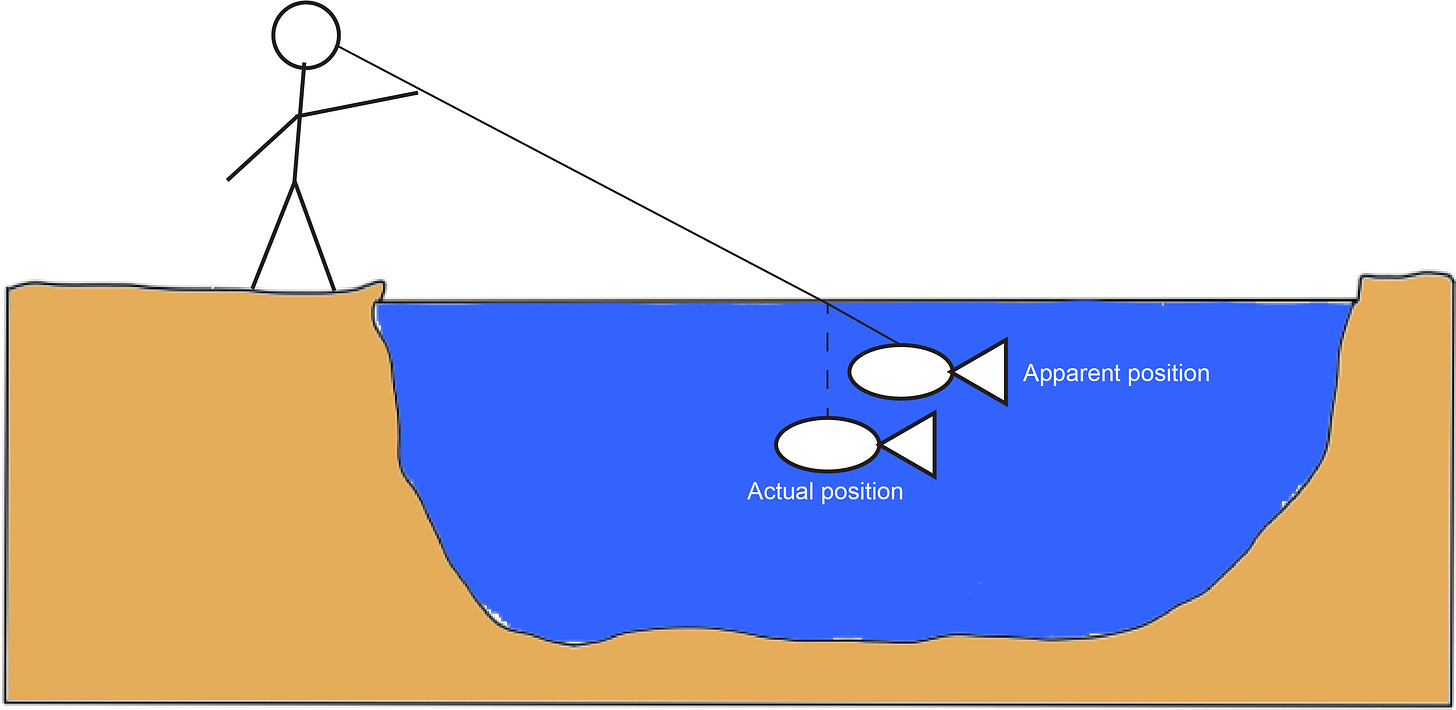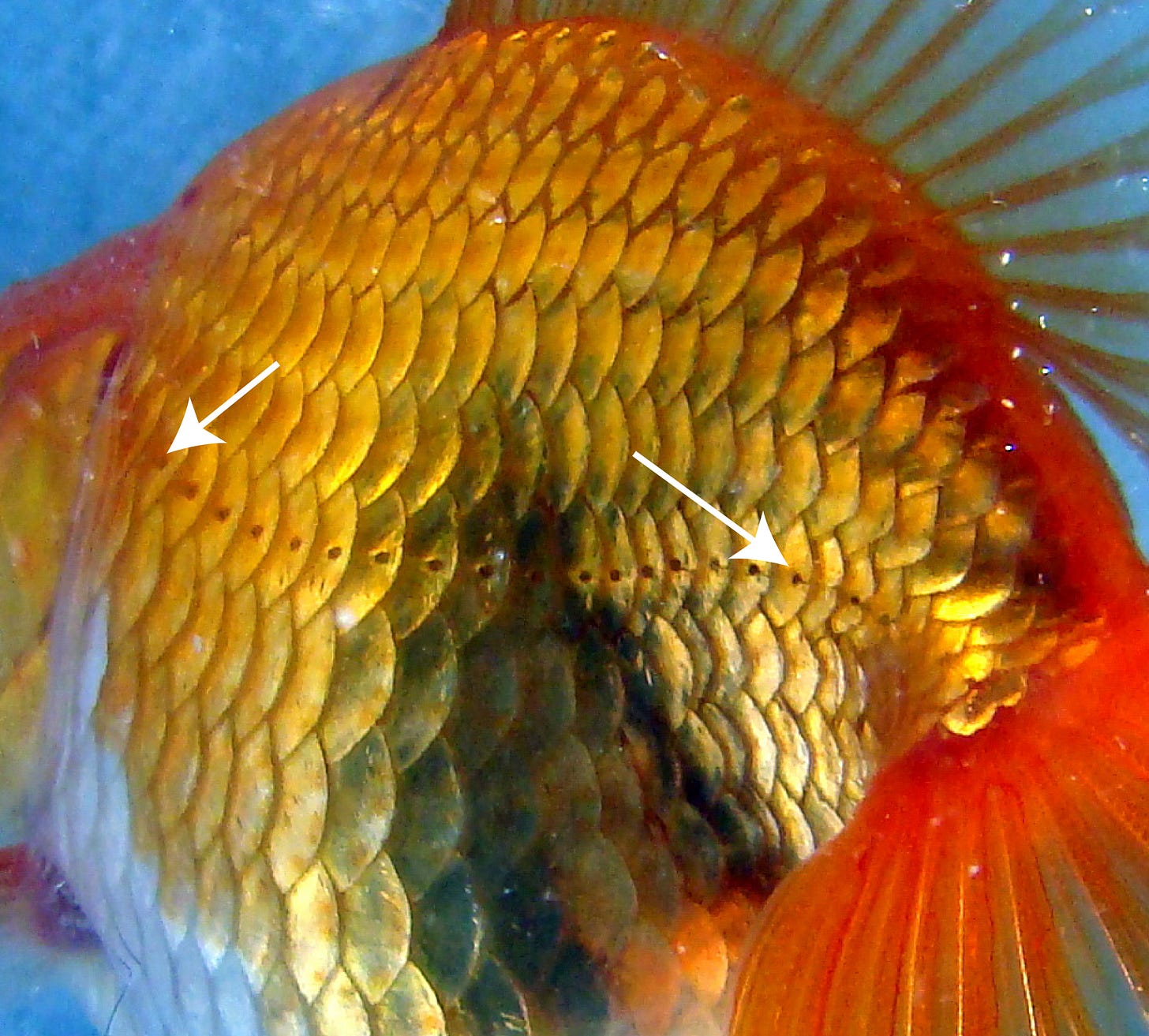I have a confession to make. I am a PhD fish scientist who is below average at catching fish. My last fishing trip in southwest Virginia ended in failure, as after several hours of no bites the fish felt so bad for me that one actually jumped out of the water and onto shore. Being a bit of a nerd (shocker I am sure), I decided to consult the lexicon of fish science with one question in mind. How can I catch more fish? I found that there is a lot I was doing wrong, and decided to share my findings to help everyone catch more fish.
Adjust your cast for fish vision.
Fishes generally have keen vision and are visual predators. Therefore, fishes use their eyes to find prey items and to detect potential threats in their environment. In general, fish eyes are located on the sides of their head and are oriented upward. Therefore, fishes have a broad range of vision: they can see both in front of and around them. Fishes do have two blind spots: beneath them (not relevant for most fishers) and above/behind them. Therefore, we can increase our chance of success in two ways. First, try to cast so your lure lands where the fish can see it. That is, you want your lure to be in front of or to the side of the head of the fish you want to catch. Because fishes are visual predators, you want to help your quarry see the bait! Second, try to position yourself behind the fish, so that it can’t see you and (correctly) identify you as a predator.
Fish are deeper and closer than they look.
Water is denser than air, meaning that light and sound moves differently through water. The scientific term for the way light bends when moving from water to air is refraction, meaning that if you are above the water looking down, any object you see is not where it appears. Because of the bending of light from water to air, the fish is actually deeper in the water and closer to you than it appears. This is particularly important if you are trying to catch fish with a projectile. Remember refraction when aiming at or near your fish.
Figure: Scientific diagram showing how refraction of light causes a fish to be deeper and closer than it appears to an observer. I am looking for a graphic maker to help with these articles.
Fish can see above the water. Blend in!
When I last went fishing, I wore bright colors. Big mistake! I hadn’t learned a critical lesson of fish biology. Fish can see what is happening above the water, and they are wary of potential predators as much as they are looking for a meal. Remember that a large animal lurking above the water is generally a predator. So, we don’t want the fish to be able to see us. The rule of thumb I have gathered from fishing books is to wear darker colors that help you blend in with the background. Also avoid shiny objects, which are particularly easy to see below the water.
Fish have excellent hearing, don’t scare them off!
Despite not having external ear openings, fish, in general, have excellent hearing. Fish are aided by the fact that sound waves travel four times faster in water than they do in air, meaning that disturbances like boat propellors, skipping stones, and paddling will alert fishes much farther away than you might expect to your presence. The good news is that they don’t hear what happens above the water very well, but any disturbance in the water is fair game.
Fish can see color, but there is no one best lure color.
There are over 35,000 species of fishes on Earth today, which have an extraordinary diversity of forms and ecologies and live in an enormous array of environments. Therefore, fish vision varies highly from one species to the next. There isn’t one color that every species enjoys. I recommend researching your fish of choice. I, for example, would have been better off using a red and white lure trying to catch bass in my family’s pond growing up. However, red and white won’t be the best for every type of fish.
Fish use smell and taste to tell if a bait is food or not. Invest in live bait!
A weird but fun fish fact is that, unlike us, they have taste buds outside of their mouth. Some fish are actually covered in taste buds, meaning that they can actually taste the water around them! We think that taste and smell are important in the decision for a fish to eat or spit out a bait or lure. Fish are more likely to spit out objects that do not smell or taste like food, such as metal or plastic. Live bait is a good investment in this regard, as it will smell and taste like food. This is not to say that you can’t catch fish with metal lures, but live bait will give you the best chance to turn a bite into a catch.
Fish can sense motion in the water, create turbulence!
Fish have a literal sixth sense, the ability to detect motion. You may have noticed that a lot of fish have what looks like a line running from their head to their tail. This line is the external part of a critical sensory organ, the lateral line system. The external openings (the lateral line) are connected to internal canals that contain specialized cells for detecting changes in water pressure. Basically, fish can sense the changes in pressure that accompany movement underwater. If you have ever wondered how schools of fish can be so coordinated, the answer is the lateral line system. For the angler, the lateral line is critical because you want your fish to sense your bait as a prey item. Ideally, your bait or lure is moving and creating enough disturbance to register to nearby fish as prey. This can be accomplished by slowly reeling in your lure or ensuring that your bait is alive and moving.
Figure: Lateral line on a goldfish indicated with white arrows (Carassius auratus; image from Wikipedia Commons, user Pogrebnoj-Alexandroff). These external openings allow fish to sense motion in the water around them.
Keep reading with a 7-day free trial
Subscribe to Fish History to keep reading this post and get 7 days of free access to the full post archives.





